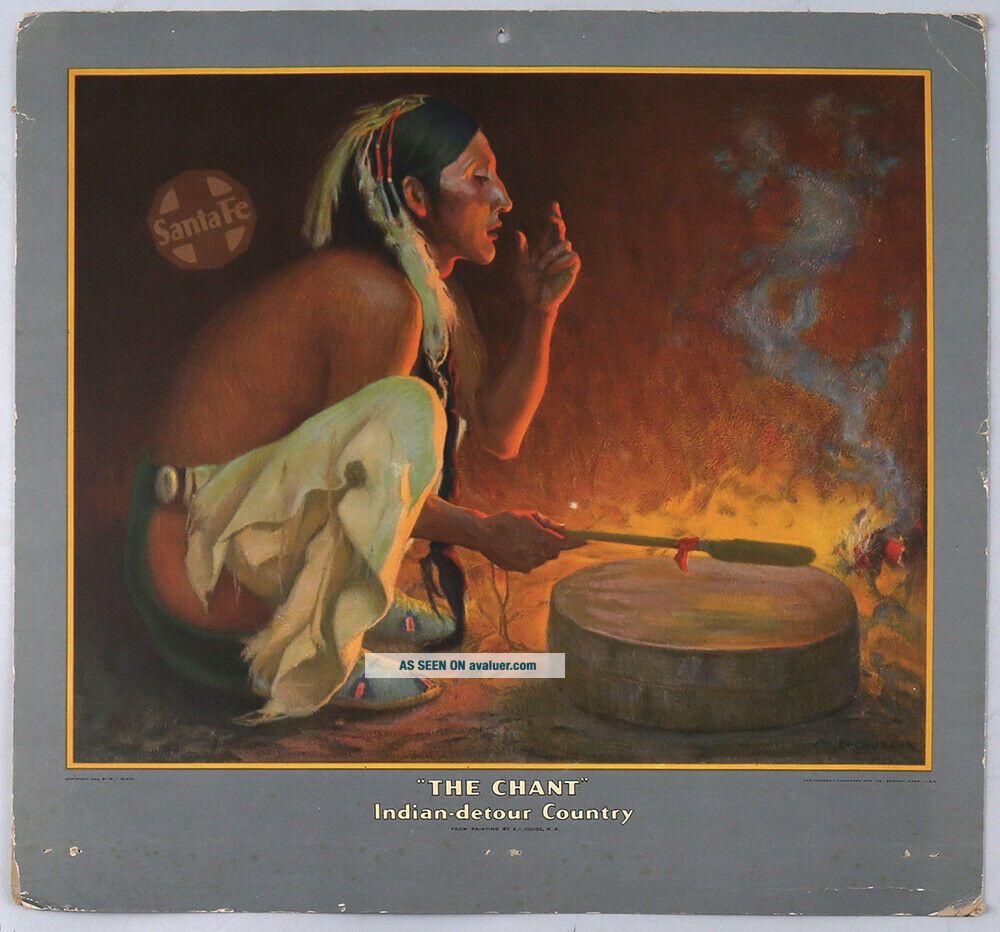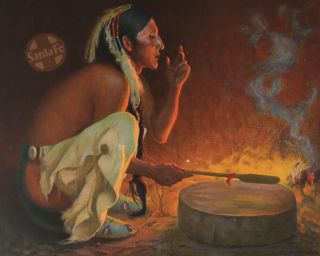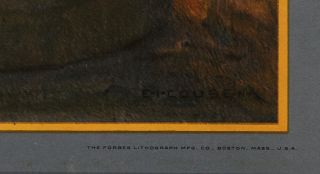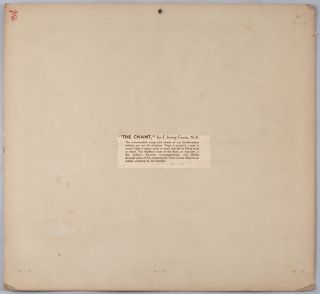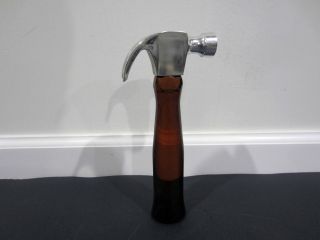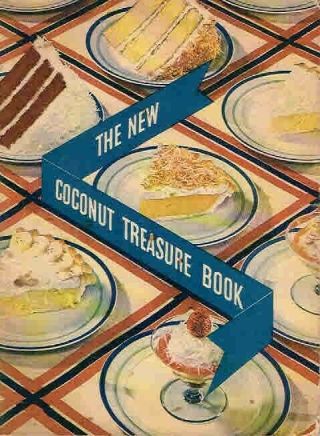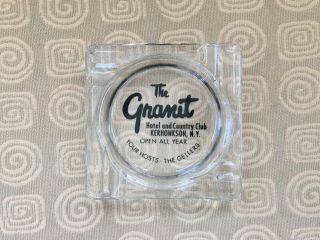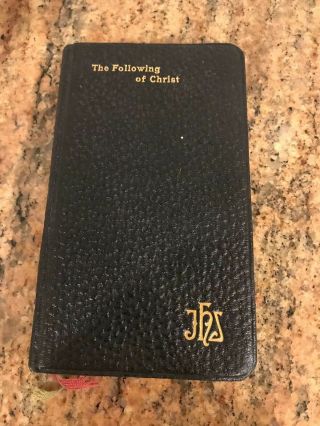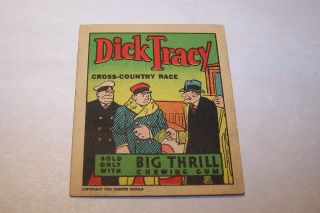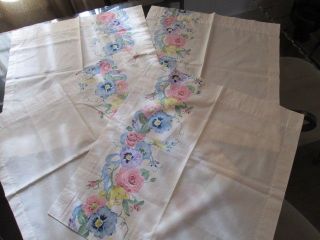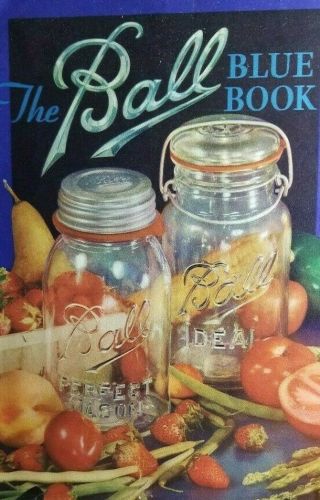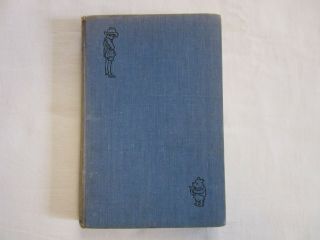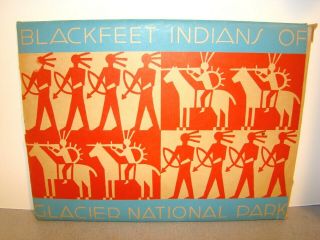Vintage 1934 The Chant Indian - Detour Country Santa Fe Railroad Fine Art Print
Item History & Price
| Reference Number: Avaluer:5037903 | Modified Item: No |
| Country/Region of Manufacture: United States |
Thanks to all our eBay bidders! We are honored to be your one-stop, 5-star source for vintage pin up, pulp magazines, original illustration art, decorative collectibles and ephemera with a wide and always changing assortment of antique and vintage items from the Victorian, Art Nouveau, Art Deco, and Mid-Century Modern eras. All items are 100% guaranteed to be original, vintage, and as described. Please feel free to contact us with any and all questions about the items and our p...olicies and please take a moment to peruse our other great eBay listings. All sell no reserve!
ITEM: This is a 1934 vintage and original advertising print from The Forbes Lithograph Mfg. Co., Boston, Massachusetts promoting the Santa Fe Railroad. The Native American imagery shows a man crouched down by a fire as he strikes out a beat on his drum. Titled "The Chant" from a painting by Eanger Irving Couse, it was meant to highlight the Santa Fe's Indian-Detour Country by rail.
Paper caption on verso reads: "'THE CHANT, ' by E. Irving Couse, N.A. ... The innumerable songs and chants of our Southwestern Indians are not all religious. There is scarcely a task or event, light or grave, great or small, but has its fitting song or chant. The rhythmic beat of the drum, or tom-tom, is the Indian's favorite accomplishment, and throbs through most of his ceremonials. Here Couse depicts an Indian chanting by his fireside."
Measures 13.75" x 13"
CONDITION: Near fine condition with creasing and softening at the corners, scattered edge wear, pin holes in the bottom margin, and general storage/handling wear. Please use the included images as a conditional guide.
Guaranteed to be 100% vintage and original from Grapefruit Moon Gallery.
••••••••••••••••••••
Born in Saginaw, Michigan in 1866, Eanger Couse is known for his depictions of the Taos Pueblo Indians, particularly the male hunter warriors squatting by a campfire and engaging in domestic activities such as preparing food—conveying their people as peaceful, dignified human beings and not the savages of Western lore.
Growing up in Saginaw, Couse lived among the Chippewa Indians and paid regular visits to the local settlements to sketch the tepees and do figure studies of the native people. From a poor family, Couse was a tenacious young artist, painting houses to earn just enough money for three months of tuition at the Art Institute of Chicago. When he returned to Saginaw, he sought out various odd jobs until he could save up enough to move to New York, which he did in 1885. Once in the city, he enrolled at the National Academy of Design and fervently continued to find the means to support himself until again, his financial predicament forced him to move home.
Finally, in 1887, Couse was able to travel to Paris and spend the next four years studying at the Academie Julian, where he blossomed under the mentorship of William Adolphe Bouguereau, whose superb draftsmanship and classical technique resonated in Couse's work for the rest of his career. During one of Couse's later trips to Paris, he fell in love with and married a fellow student, Virginia Walker, whose family lived on a ranch in Washington near the Oregon border.
In 1891, the couple settled down in the Northwest, resuming Couse's relationship with to the local Klikitat, Yakima and Umatilla tribes; but this time he painted them in the pastel colors characteristic of the French Barbizon School. Despite his own captivation, there was little interest in Indian subject matter in the art world in America, so he also painted pastoral scenes of his rural surroundings.
Couse eventually went back to France and settled in the bucolic province of Pas de Calais on the English Channel, where he continued to paint agrarian scenes with sheep on hillsides. Although he had stylistic influences from Europe, he became more and more determined to develop a technique that was uniquely American, which reignited his fascination with the Native American people.
After hearing fellow landscape artists Joseph Henry Sharp, Ernest Blumenschein and Bert Phillips laud over the beauty of New Mexico's vista and native people, Couse left Paris to visit Taos for the first time in 1902. Despite his best attempts to immerse himself in their culture without being intrusive, the Indian population who lived in the relatively undisturbed Pueblo communities was hesitant to oblige him because of their belief that the soul of the sitter would pass into the picture once it was complete. Nevertheless, he proved himself to be a committed member of society, establishing close friendships within the local Indian tribes and earning the trust of many who eventually became his longtime willing models.
In 1912, he was elected the first president of the newly founded Taos Society of Artists and in 1927, he and his family moved there permanently. Sadly, his wife passed away two years later, which had a great impact on his vitality that was evident in his works to follow. Nevertheless, his paintings maintained a poetic and peaceful tone that reflected the civilization that maintained harmony within itself.
– Biography from Heritage Auctions
••••••••••••••••••••



